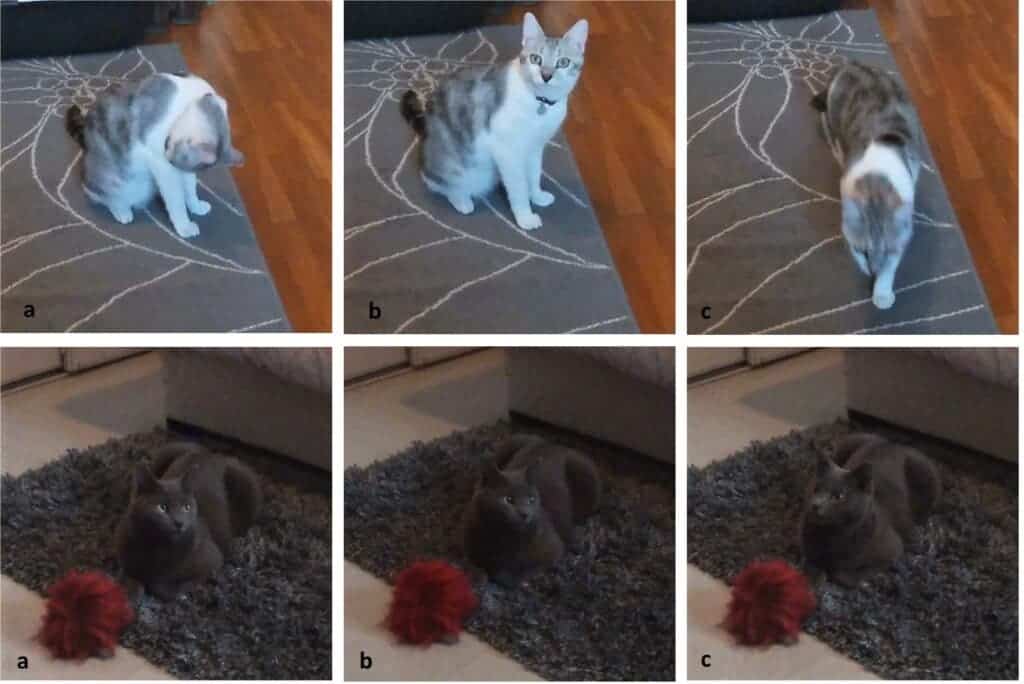
Cats can be aloof, independent, moody, and quite whimsical — but that doesn’t mean that they can’t be loyal or loving, just that they’re not exactly as responsive and eager to please as dogs are. In fact, often times it seems like cats command their owners and not the other way around. If you’re the one cleaning the litter box, can you deny this with a straight face?
Jokes aside, the typical cautious and temperamental behavior of housecats makes it rather challenging to ascertain how well they bond with their humans. Some extreme claims suggest that cats are not even fully domesticated unlike dogs and livestock, and for this reason, they are much harder to train, while others maintain that cats are every bit as needy and loyal as their canine counterparts.
But any communication difficulties between cats and humans aren’t owed to a lack of ability on the felines’ part.
According to a new study out today in the journal Animal Cognition, cats can distinguish between the voices of their owners and strangers, as well as between the different tones used by their owners, adjusting their behavior each time.
When the owner speaks, cats lend their ears — especially if they’re trying to sound cute
Humans employ extremely rich speech communication, which goes beyond the actual content itself, with tone and facial (and body) expression also playing an important role. Saying the same thing but with a different tone can mean totally different things even though the words are the same. Studies suggest that people tend to change the pitch of their voice depending on who they are talking to and the circumstance in which they are talking. For instance, when conversing with others they perceive as having higher status, people generally tend to talk using a higher pitch, signaling submission.
People often change their voices when they are talking to their pets, which often sounds like baby talk. The speech is slower, more melodic, and has a higher pitch than adult-direct speech. “Dog instinctively associate high-pitched noises with reward or excitement,” trainer Kyra Sundance writes in her book The Dog Rules. “A high-pitched, singsongy vocalization means that an animal is non-threatening, peaceful or empathetic.”
But can cats too recognize your childish gibberish? Charlotte de Mouzon and colleagues from Université Paris Nanterre set out to investigate this question and recruited 16 furry volunteers and their human owners for their study.
The researchers recorded the voices of both the cat owners and of a stranger while they spoke phrases in a cat-direct or human-direct tone. While they cycled through the four types of recordings, the researchers paid close attention to feline behavioral cues, such as resting, ear moving, pupil dilation, and tail wagging.
When they heard voice clips of a stranger calling them out by their name, 10 out of the 16 cats exhibited reduced behavior intensity, meaning they were the least reactive. However, when they heard their owner’s voice beckoning them, their behavior intensity increased. For instance, they would turn their ears to face the speakers from where the voice could be heard and their pupils visibly dilated.
This first part of the study shows that cats can distinguish between the voices of their owners and that of strangers.
In the second part of the research, the 10 cats showed significant responsiveness to the voice of their owners when exposed to audio clips of their humans speaking in a cat-direct or adult-direct tone. Eight of them increased their behavior intensity when hearing the cat-directed tone and decreased their behavior intensity when they listened to the adult-direct tone. The cats didn’t modify their behavior at all when strangers were speaking to them in either an adult- or cat-direct tone.

This means that not only can cats tell their owners’ voices apart from strangers, but they can also tell distinguish between different tones, even though their responsiveness is a lot more subtle than, say, dogs. The authors caution, however, that their study involved a small sample size so the findings are obviously not representative of all cats.
Nevertheless, the study shines by adding more depth to human-feline interactions, showing that cats are not in any shape or form oblivious to our communication. It’s just that they might not care that much to actually follow orders or house rules.






